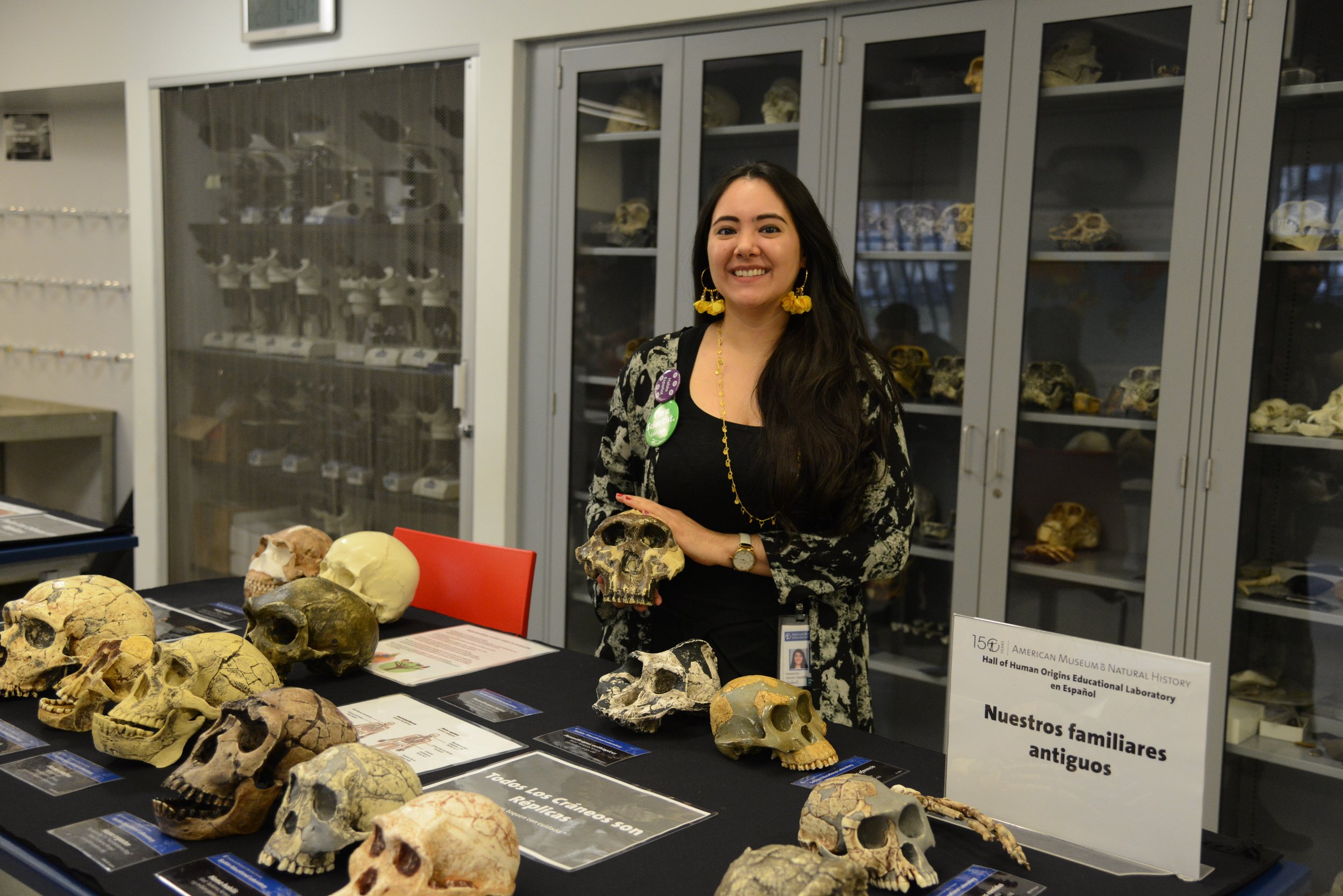Led by biological anthropologist Alessandra Vecino Gazabón, members of the Society toured the Spitzer Hall of Human Origins at the American Museum of Natural History to understand our long-lost ancestors and our connections to them. Featured in the Hall were the casts of Lucy (Australopithecus afarensis; ~3.2M years old), one of the oldest and most complete skeletons ever found, and of Turkana Boy, roughly 1.6M years old. By offering comparisons of the size and posture of these skeletons, Alessandra adeptly explained the nearly 7-million-year history of how modern humans (Homo sapiens) came to be. Alterations of foot shape, shifts in skull size and shape, the lengthening of leg bones and morphological changes to the pelvis were just some of the milestones discussed.
A special thank you to Alessandra Vecino Gazabón for organizing and leading the tour! Also thanks to our AMNH colleagues, Russell Taragan for arranging ear pieces, and Colby Sain, Pio Colemenares and Jairo Moreno for assisting with logistics and making this event possible. To view more photos from this event, please visit our gallery. All photo credit goes to Glenn Doherty.
Alessandra Vecino Gazabón is a Ph.D. candidate in Comparative Biology at the Richard Gilder Graduate School of the American Museum of Natural History. She completed her B.A. in Archeology in 2015 at Columbia University and her B.A. in International Relations in 2010 at the Universidad del Norte in Colombia. She was awarded a prestigious NSF Graduate Research Fellowship in 2021. She is interested in the comparative biology of non-human primates in order to understand the origins and biomechanics of hominin bipedal locomotion and has also studied ape cranial morphology.


